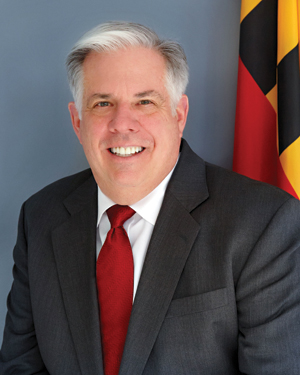The Nature of Change: Fall 2017
 The Chesapeake Bay is Maryland’s most treasured natural asset. Since taking office, our administration has made incredible progress toward protecting the bay, including more than $3 billion in restoration efforts—an unprecedented investment.
The Chesapeake Bay is Maryland’s most treasured natural asset. Since taking office, our administration has made incredible progress toward protecting the bay, including more than $3 billion in restoration efforts—an unprecedented investment.
We continue to make great strides—this year the bay received one of the highest scores calculated by scientists at the University of Maryland Center for Environmental Science in its annual survey. In addition, fish populations greatly improved to an A (90 percent). This is great news for the many Marylanders who enjoy the waters for recreation or rely on the bay to make their living.
In order to continue our progress, we must continue to work with all of the bay jurisdictions and our federal partners. In June, I hosted the annual meeting of the Chesapeake Executive Council of the Chesapeake Bay Program at the State House in Annapolis, and was honored to be elected the new chair. This council includes representatives of each jurisdiction within the watershed—Delaware, New York, Pennsylvania, Virginia, West Virginia and the District of Columbia—along with the federal Environmental Protection Agency.
During the meeting, we signed a resolution supporting the Chesapeake Bay Program partnership and advocating for continued federal funding to restore and preserve the region’s most precious natural resource. The resolution also calls for science, monitoring, modeling and restoration to continue with the full participation of local, state and federal agencies, and private sector entities as appropriate.
Under our administration, Maryland will continue to do its part to have a long-lasting, positive impact on the bay and our environment. Shortly after taking office, we brought farmers, scientists, community leaders and environmental advocates together to develop Phosphorous Management Tool regulations, one of the most significant initiatives to clean up the bay in a generation.
We are also committed to addressing the threat posed by sediment flowing from the Susquehanna River through the Conowingo Dam. We have worked to bring together scientists, local and regional leaders, and environmental regulators to address this critical issue, recently convening a second Conowingo Dam Summit and issuing a Request for Proposal for a pilot program on dredging behind the dam and the beneficial reuse of dredged material.
In order to be successful as we move ahead together, Chesapeake Bay restoration must include innovative financing, transparent public-private partnerships, and market-based solutions that drive costs down and promote new technologies.
As a lifelong Marylander and the proud governor of this great state, I will remain committed to ensuring that our natural treasures will be preserved for future generations.
Larry Hogan
Governor


 1-888-373-7888
1-888-373-7888 233733
233733